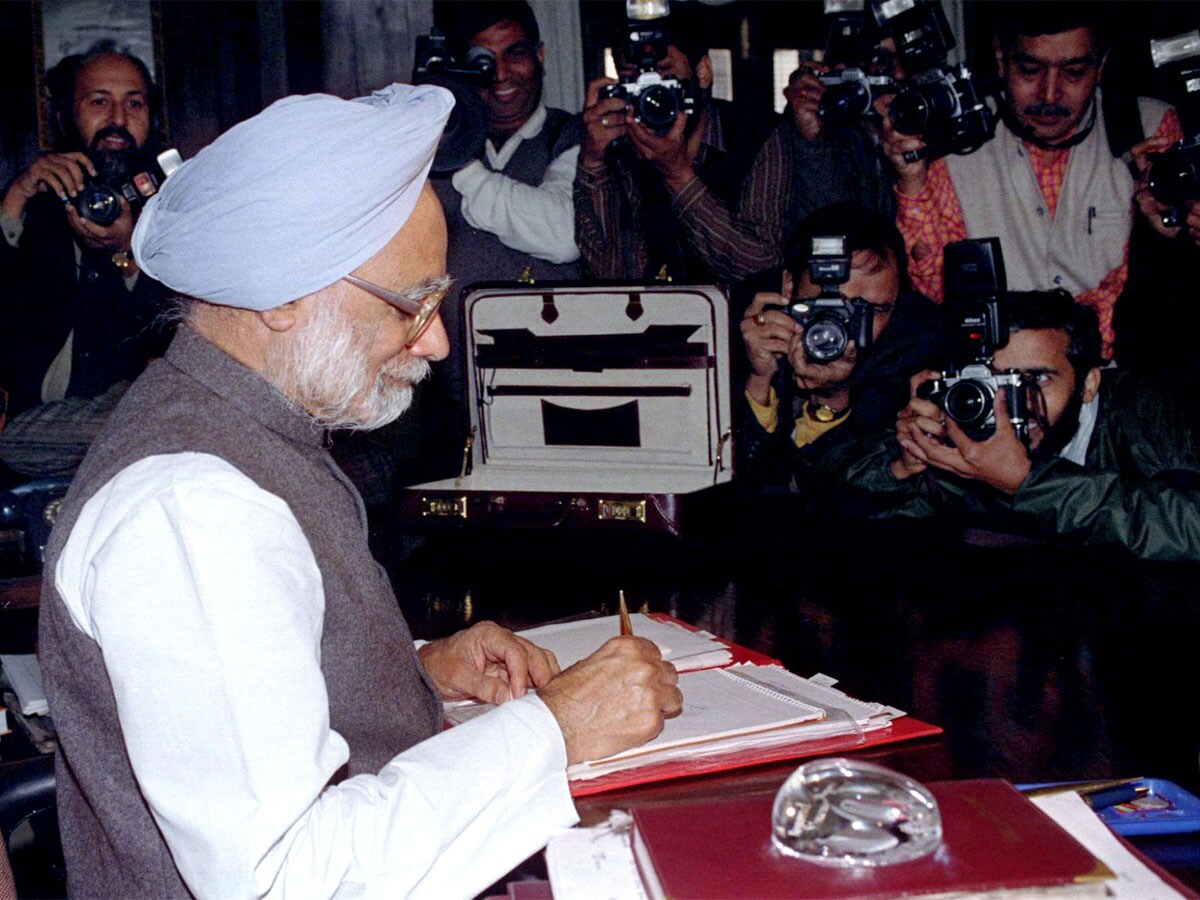
Dr Manmohan Singh has been associated with economic reforms which were introduced in 1991, which, in turn, changed the overall landscape of the economy. For the new generation, everything that can be seen in terms of access to foreign brands in consumer goods and dining, ATMs and subsequent enhancements in system of payments, free pricing of IPOs and so on were not something that existed before 1991. The reforms process, hence, was a turning point for the economy where scarcity gave way to surpluses and markets resembled those of the most developed western economy. Singh, as finance minister, showed the way.
Interestingly, there is a little-remembered story behind the reforms process. While Singh is credited with bringing in reforms, it was the coming together of several factors that made them possible. To begin with, the Indian economy was going through tough times with forex reserves depleting. The serving minority government had the game plan of reforms ready, but could not implement the same as Yashwant Sinha, who was the finance minister under Prime Minster Chandrashekhar, could not present a full Budget with the reforms as only an interim one could be put on the table. The IMF [International Monetary Fund] loan that was absolutely necessary would not have come without the reforms and hence, the nation had to wait for the new government under Narasimha Rao to announce the same.
Therefore, the economic reforms which Singh implemented had three factors working. First, the plan was almost already in place under Sinha. Second, the IMF had laid down reforms as a condition for giving the loan and hence there was really no choice as such for India. Third, prime minister Rao gave full support for the same which was significant because there was a sudden and drastic shift in political ideology.
This background was important because Singh was known to be a socialist economist and not one predisposed to markets in his formative years in the profession. Being a professor in economics, the trend in the 70s and 80s tilted towards the socialist model of growth. He had also headed the Planning Commission which was the hallmark of a socialist state. Under these conditions, it was remarkable that Singh shifted his ideology and stance to the changing times and aligned to the free markets dictum which literally pulled the Indian economy up.
So, what are the reforms which were pathbreaking. Three sets come to mind which we probably take for granted. Foremost was liberalisation in industry where enterprise was given a free hand, and the restrictions placed on expansion and diversification were removed. This allowed for higher investment which led to growth.
Second, foreign investment was liberalised. In the 70s, a decision was taken to put severe restrictions on operations of foreign companies in terms of even repatriation which caused brands like IBM and Coca-Cola to close shop. The new package saw the emergence of the common brands we see today like Pepsi, McDonalds, Nike, Adidas, etc.
Third, the exchange rate regime shifted from a fixed rate to a flexible one over a couple of years and logically ended with current account convertibility. Today, one can comfortably buy foreign exchange for travel or education as the limits are more than liberal. This was radically different from the quotas that existed prior to reforms.
Fourth, this focus on liberalisation logically spread to foreign trade where restrictions on imports were relaxed. From total bans to quotas to a system where only tariffs are imposed; the trade system has evolved. Today virtually all legal products can be imported freely, including fruits and vegetables.
The second set of reforms which were remarkable—and at times have gone beyond what has been done in even the most developed nations—was in the field of financial sector reforms. Starting with banking, where another former RBI (Reserve Bank of India) Governor Narasimham spearheaded the committee, a series of changes were witnessed. Adopting to global standards on prudential norms to opening the field for new private banks, the entire landscape of banking changed. Here, the RBI played a role in bringing about continuous incremental changes so that there were no shocks to the system. At the other end, the reforms brought about changes in the capital market which were much ahead of times, starting with giving more power to SEBI (Securities and Exchange Board of India) to grow the market which was required given the liberalisation that was brought in. This involved the establishment of NSE as an online stock exchange and opening the gates for foreign institutional investors (now called foreign portfolio investors) to invest in Indian markets.
The third set, which came directly under the purview of Singh, was the budgeting process. Fiscal reforms got in the concept of fiscal deficit and in course of time did away with the monetisation of the same. Putting tabs on growth in public debt became a goal and all budgets had numbers that had to be defended as the final deficit numbers had to be reined in.
To the credit of Singh, the package was one of big-bang reforms in all areas which ensured there were no inconsistencies; and all sectors witnessed the same degree of traction. This legacy has carried on through over three decades across different governments in power. This acceptance is a vindication of the idea that was to become the new India.
(The writer is chief economist, Bank of Baroda. Views are personal)
